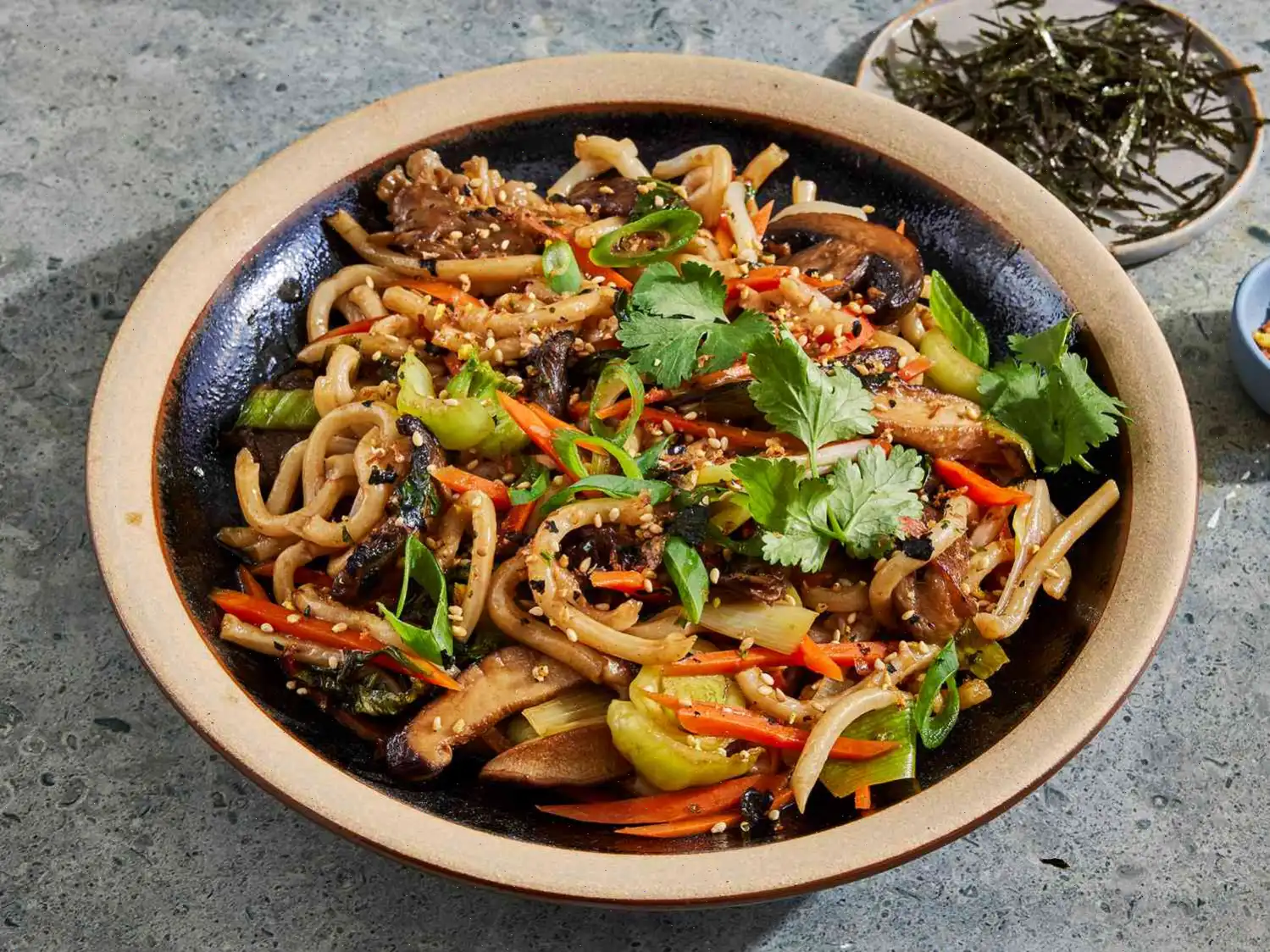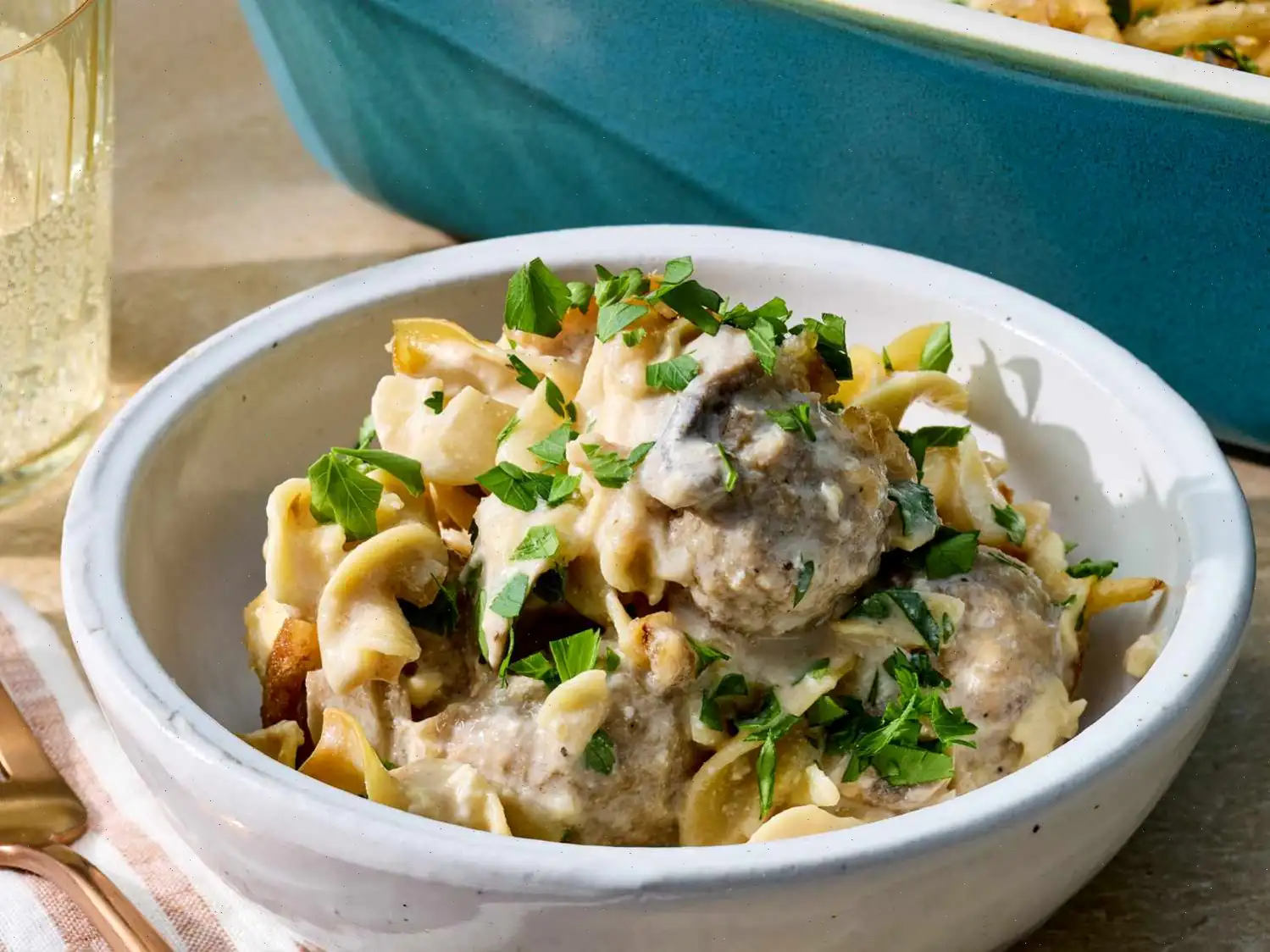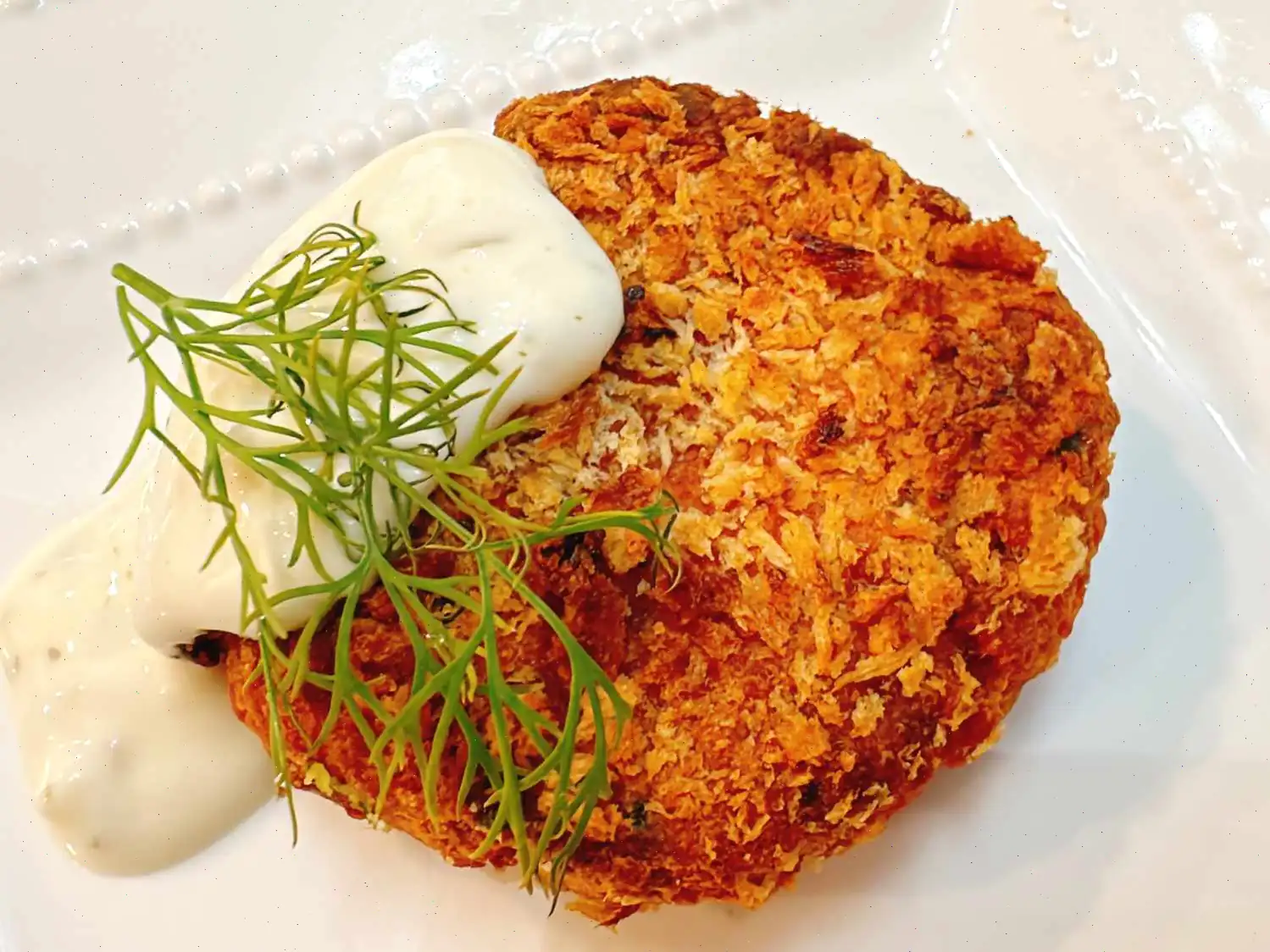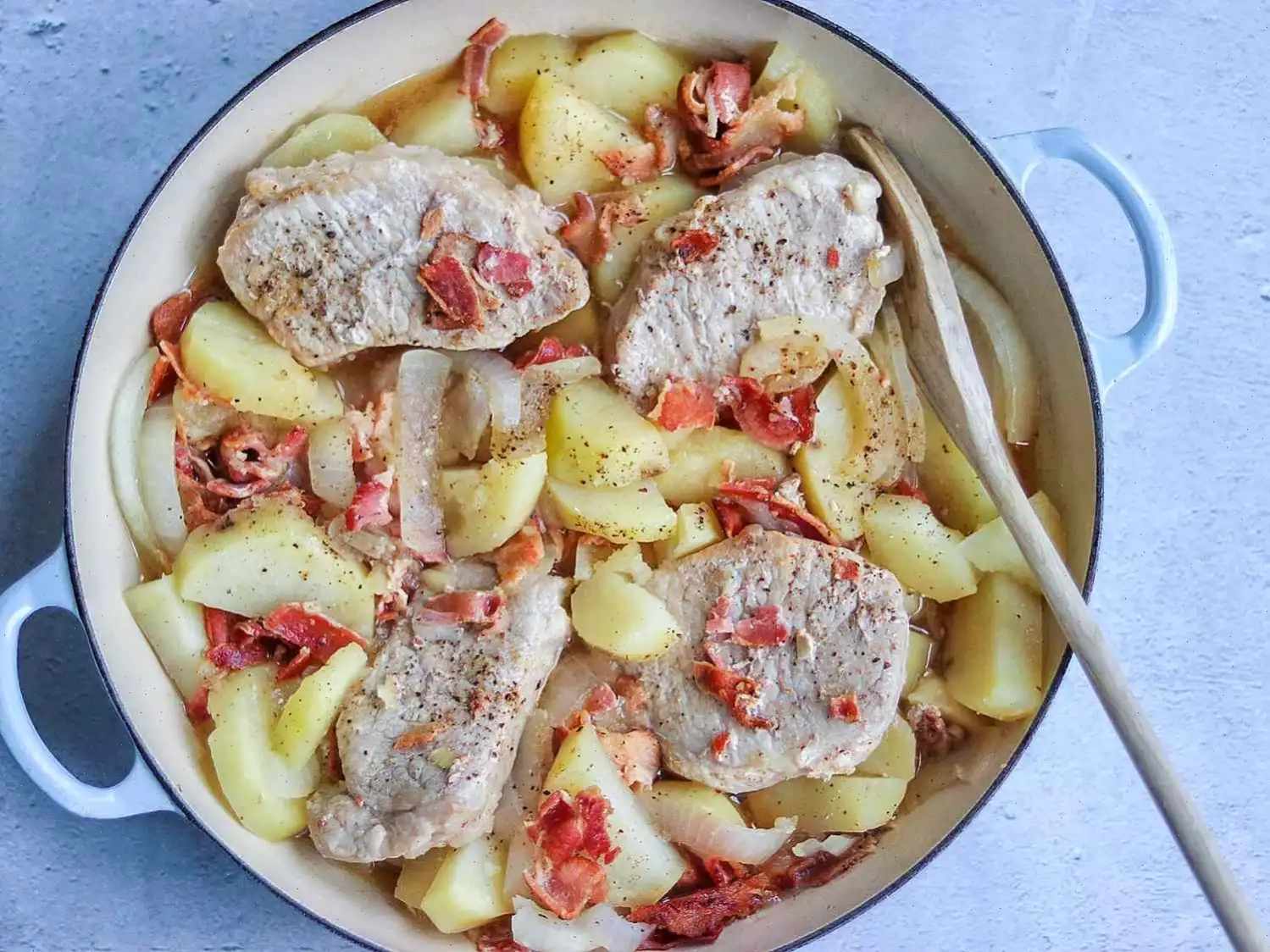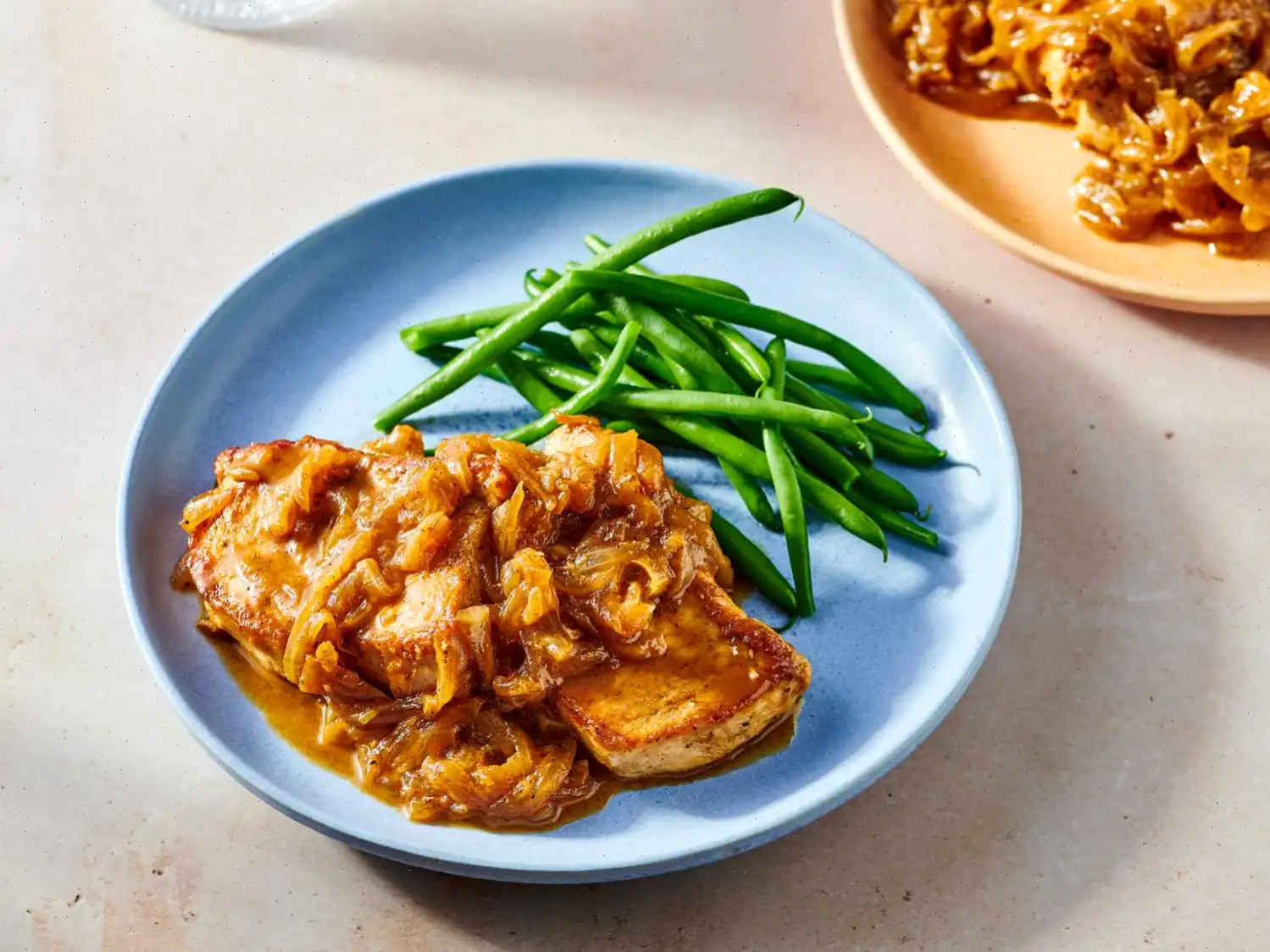
Yaki Udon
Ingredients
- cup oyster sauce
- 3 tablespoons soy sauce
- 2 tablespoons mirin
- 1 tablespoon unseasoned rice vinegar
- 2 teaspoons Worcestershire sauce
- 2 teaspoons toasted sesame oil
- 1 teaspoon packed light brown sugar
- 1 teaspoon Sriracha sauce
- 1 medium garlic, grated
- 1 medium (5-oz.) bunch scallions
- 2 tablespoons canola oil
- 12 ounces sliced mixed wild mushrooms (such as cremini, oyster, and shiitake) (about 6 cups)
- 2 medium heads baby bok choy, thinly sliced
- 1 (10 ounce) package carrots, cut into match-stick size pieces
- cup water, divided
- 1 (14 ounce) package pre-cooked udon noodles (such as KA-ME)
- Optional garnishes: thinly sliced nori, cilantro, lime wedges, furikake seasoning
Directions
Step 1: In a small bowl, whisk together oyster sauce, soy sauce, mirin, rice vinegar, Worcestershire sauce, sesame oil, brown sugar, Sriracha, and grated garlic. Set the mixture aside.
Step 2: Remove the root ends from the scallions and discard them. Slice the white and light green parts of the scallions into 2-inch pieces, then quarter each piece lengthwise. Set them aside. Thinly slice the remaining dark green parts of the scallions for garnish and reserve them for later.
Step 3: Heat canola oil in a large skillet or wok over medium-high heat. Add the mushrooms in a single layer and cook without stirring for about 3 minutes, or until browned on one side. Stir the mushrooms, then continue cooking for another 4 minutes, stirring occasionally, until the mushrooms are tender and golden brown on both sides.
Step 4: Add the bok choy, carrots, sliced scallion whites and light greens, and cup of water to the skillet with the mushrooms. Stir occasionally and cook for about 3 minutes, or until the vegetables are just tender.
Step 5: Add the udon noodles and the remaining cup of water. Use tongs or a spoon to gently separate the noodles as they cook. Continue cooking for 1 minute, until the noodles are heated through.
Step 6: Pour in the reserved oyster sauce mixture and stir constantly to coat the noodles and vegetables evenly. Cook for another minute, ensuring everything is well mixed.
Step 7: Divide the noodle and vegetable mixture among serving bowls. Garnish with the reserved sliced green parts of the scallions and any optional garnishes like thinly sliced nori, cilantro, lime wedges, or furikake seasoning. Serve immediately.
Nutrition Facts (per serving)
| Calories | 11g Fat | 23g Carbs | 10g Protein |
|---|---|---|---|
| 212 | 11g | 23g | 10g |
Servings per recipe: 4
Percent Daily Values
- Total Fat: 14% (11g)
- Saturated Fat: 5% (1g)
- Sodium: 51% (1183mg)
- Total Carbohydrate: 8% (23g)
- Dietary Fiber: 24% (7g)
- Protein: 21% (10g)
- Potassium: 33% (1552mg)
Note: Percent Daily Values are based on a 2,000 calorie diet. Your daily values may be higher or lower depending on your calorie needs.
** Nutrient information is not available for all ingredients. Amounts are based on available data.

Origin and History
Yaki Udon is a popular Japanese dish that originated from the culinary traditions of Japan. It is a stir-fry noodle dish made with thick, chewy udon noodles and a variety of vegetables, often enhanced with a savory soy-based sauce. The word "yaki" translates to "fried" or "grilled" in Japanese, while "udon" refers to the thick wheat noodles. The dish likely evolved as a quick and hearty meal using readily available ingredients, and it has become a favorite in both home kitchens and Japanese restaurants worldwide.
Regional Characteristics
While Yaki Udon is commonly found throughout Japan, the preparation and variations of this dish can differ by region. In Kansai (the region surrounding Osaka and Kyoto), Yaki Udon is often served with simple, fresh ingredients like mushrooms and bok choy, while in Kanto (the Tokyo region), a sweeter or richer sauce might be used. Some regional variations also include the addition of meats like chicken, beef, or pork, or even seafood such as shrimp. Toppings like nori (seaweed), pickled ginger, or sesame seeds are sometimes added, depending on local customs.
How it Differs from Similar Dishes
Yaki Udon shares similarities with other popular stir-fry noodle dishes, such as Yaki Soba. However, the primary difference lies in the type of noodles used. While Yaki Soba is made with thin wheat noodles similar to ramen, Yaki Udon uses the much thicker, chewier udon noodles, which give the dish a heartier texture. Another distinguishing feature is the sauce: Yaki Udon often incorporates a combination of oyster sauce, soy sauce, and mirin, giving it a deeper umami flavor compared to the slightly sweeter and tangier sauce typically used for Yaki Soba.
Where is Yaki Udon Usually Served?
Yaki Udon is a versatile dish and can be found in a variety of settings. It is a staple in Japanese home cooking and can be made with whatever vegetables or proteins are on hand. In restaurants, it is often served as part of a larger meal or as a standalone dish. Yaki Udon can be seen in izakayas (Japanese pubs), ramen shops, and even casual eateries that specialize in noodle dishes. It is also a popular option for lunch or dinner in Japanese cuisine, enjoyed for its quick preparation and satisfying taste.
Interesting Facts About Yaki Udon
- Udon noodles have been a part of Japanese cuisine for centuries. The earliest recorded mention of udon dates back to the 9th century.
- Yaki Udon is often considered a comfort food in Japan due to its satisfying texture and umami-rich flavor.
- Some variations of Yaki Udon include adding scrambled eggs, tofu, or even tempura for a unique twist on the traditional recipe.
- The dish is a popular way to use up leftover vegetables and meats, making it an excellent choice for reducing food waste.
- In addition to being served as a savory meal, Yaki Udon can be adapted to include spicy elements, such as Sriracha sauce, to cater to different tastes.
FAQ about Yaki Udon
Comments
Heather Cruz
11/27/2023 03:14:39 AM
Quite average. The strong flavors of garlic and oyster sauce overpower everything, including the soy sauce. It could benefit from the addition of some meat.


